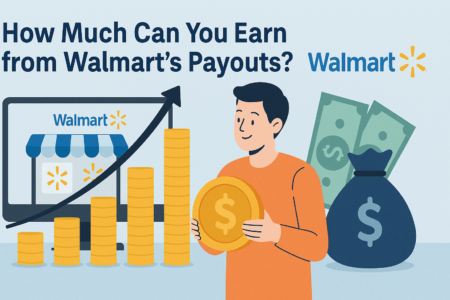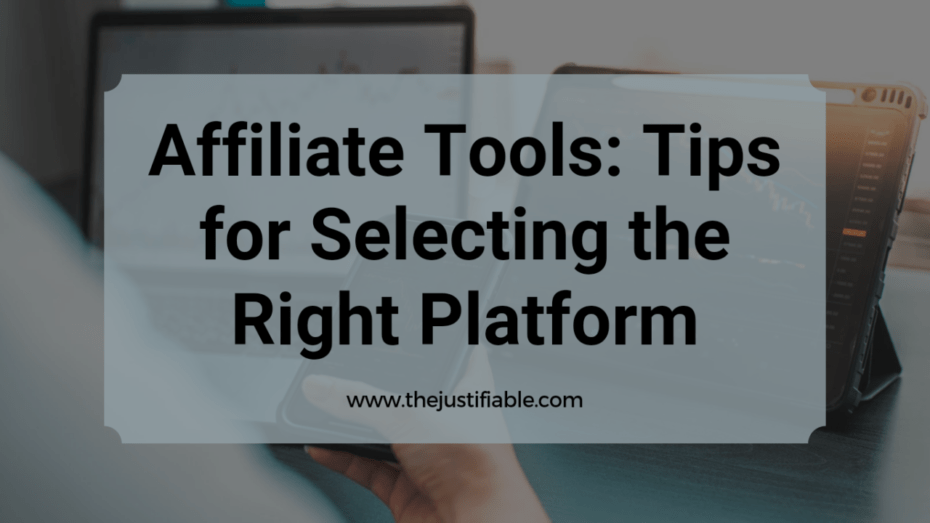Table of Contents
Ever wondered if the Walmart affiliate program is really worth your time? Can you actually earn big promoting Walmart products—or are the payouts too small to matter? What makes it different from other popular affiliate programs like Amazon or Target?
If you’ve been searching for a reliable way to monetize your content with trusted products and a household name, this guide is for you. We’re breaking down everything you need to know—from how it works, to how much you can earn, to the smartest ways to promote Walmart products for top commissions. Let’s get into it and see if Walmart deserves a spot in your affiliate strategy.
What Is the Walmart Affiliate Program All About?
The Walmart affiliate program gives content creators and online marketers the chance to earn commissions by promoting Walmart products. It’s a powerful way to monetize your audience using one of the most trusted retail brands in the world.
How Walmart’s Affiliate Network Works Behind the Scenes
When you join the Walmart affiliate program, you’re actually partnering through a third-party platform called Impact. This platform manages your account, tracks clicks and conversions, and pays out your commissions. Instead of building its own internal affiliate network, Walmart chose to partner with a robust platform that handles the tech, so affiliates can focus on promotion.
Here’s how it flows behind the curtain. You choose products listed on Walmart’s site, generate unique tracking links through your Impact dashboard, and then share those links on your blog, email list, or social channels. Every time someone clicks your link and makes a qualifying purchase, you earn a percentage of the sale. Impact tracks the entire process in real time, including clicks, cart actions, and final purchases.
I think this setup is actually a smart move. It means you’re not stuck with Walmart’s own tech, and you get access to Impact’s tools like performance reporting, deep linking, and commission insights. That’s helpful when you want to fine-tune your strategy and scale your results.
For many of us, the appeal lies in promoting products from a brand that already has massive trust. People already shop at Walmart. You don’t have to convince them of the brand—they just need the right product at the right time, and your content can help with that.
Who Can Join and What Are the Eligibility Requirements?
The Walmart affiliate program is open to bloggers, influencers, YouTubers, and pretty much anyone with an audience or online presence that aligns with their product offerings. While Walmart doesn’t have overly strict entry barriers, they do screen applications. If your content is spammy, irrelevant, or lacks a clear audience focus, you might not get approved.
I suggest making sure your website or platform is active, has original content, and reflects a clean user experience. If you’re new, that doesn’t disqualify you, but it helps to show Walmart that your content offers value and could drive traffic to their store.
There’s no cost to join, and you don’t need to be a U.S. resident, though some international applicants may face regional limitations depending on the market. Once approved, you’ll get access to your dashboard, tracking tools, and links.
Something worth knowing—Walmart leans toward partners who promote consumer goods, household essentials, and lifestyle products. So, if your audience is more into tech, luxury, or niche products, the alignment might be weaker. But if you write about parenting, home improvement, shopping hacks, or frugal living, you’ll likely be a good match.
Pros and Cons Compared to Other Affiliate Platforms
Let me break it down for you—Walmart’s affiliate program isn’t perfect, but it has some standout perks that make it appealing. The most obvious advantage? You’re promoting a trusted retail brand that already has massive market share and name recognition. When your readers see a Walmart link, there’s an inherent level of trust that increases click-through rates.
Another plus is Walmart’s wide product catalog. You can promote everything from groceries and home goods to electronics and toys. This flexibility gives you room to test multiple verticals without joining separate programs.
That said, the commission rates are relatively low. Walmart offers between 1% and 4% depending on the product category. Digital products and groceries tend to fall on the lower end, while select categories—like baby items and certain fashion products—earn a bit more. Compared to Amazon, where commission rates are often similar, Walmart doesn’t always have the upper hand.
Another potential drawback is the short cookie duration. Walmart’s affiliate program offers a 3-day cookie window, which means you only get credited for purchases made within 72 hours of a click. That limits your earning potential, especially if your audience doesn’t buy right away.
Still, I believe that for bloggers who focus on Walmart-friendly niches and want to diversify beyond Amazon, this program offers a viable way to earn.
Walmart’s Affiliate Marketing Model Explained Simply
Walmart’s affiliate marketing model is based on performance—plain and simple. You get paid when someone makes a qualifying purchase through your link. That makes it a low-risk, high-opportunity system for content creators, especially those who already recommend Walmart products.
Think of it like this: You’re acting as a bridge between your audience and Walmart’s massive catalog. Your job is to create content—blog posts, product roundups, tutorials, or shopping guides—that helps people discover products they need. When someone clicks your link and buys, you earn a slice of that sale.
You don’t need to worry about inventory, shipping, or customer service. That’s all handled on Walmart’s end. Your focus stays on what you do best—creating content and guiding your readers to helpful products.
I suggest thinking of affiliate marketing with Walmart like a long game. If you’re consistent, build trust with your audience, and understand which products resonate most, your earnings will grow. The more targeted your approach, the better your results. This isn’t about spamming links—it’s about relevance and timing.
Pro Tip: Before you promote anything, spend time exploring Walmart’s site to identify bestsellers, trending products, and seasonal deals. Align those with your niche, and you’ll boost both clicks and conversions.
How Much Can You Earn from Walmart’s Payouts?

Walmart’s affiliate program offers a tiered commission structure based on product categories. While the percentages may not seem huge, they can add up when promoted strategically and consistently.
Understanding Commission Rates and Product Categories
Walmart’s affiliate earnings depend heavily on what you choose to promote. Not all products pay out the same, which makes category selection a key strategy. You’ll find that commission rates typically range from 1% to 4% depending on the product type. That means if someone buys a $100 item through your link, your commission could be as little as $1 or as much as $4.
Higher rates usually apply to select product categories like baby gear, home goods, apparel, and beauty items. Meanwhile, essentials like groceries or digital downloads tend to sit at the lower end. It’s tempting to promote big-ticket items like TVs, but those often come with the smallest payouts due to thin retail margins.
I suggest leaning into high-converting, mid-priced products within higher-paying categories. Items that are regularly purchased—like kitchen gadgets or baby products—may bring in less per sale, but they move faster and more frequently. That volume can really add up over time.
Keep in mind that Walmart’s rates may change depending on promotions, seasons, and internal policies. It’s smart to revisit your strategy each quarter and recheck which categories are currently paying out the most. That way, you stay aligned with what brings in the best return on your time and content efforts.
How Payouts Are Calculated and When You Get Paid
Once someone clicks your affiliate link and buys a qualifying product, your commission starts tracking. But before anything hits your account, a few things have to happen. The purchase needs to be verified, the return window has to close, and the affiliate platform—Impact—has to process everything.
Typically, Walmart applies a 3-day cookie window. That means if someone clicks your link but doesn’t buy within 72 hours, you won’t earn anything from that lead. That’s why timing matters, especially if your audience needs more time to consider before buying. You want to encourage faster decision-making without being pushy.
After a sale is locked in and confirmed, Impact adds the commission to your pending balance. From there, you usually receive your earnings once a month, as long as you hit the minimum payout threshold. I’ve found that the wait can sometimes feel slow, especially if you’re starting out—but once the pipeline gets rolling, payouts can become a predictable income stream.
It’s also important to note that returns and canceled orders will deduct from your commissions. So if someone buys a product through your link, then returns it a week later, that commission gets clawed back. This is common in most affiliate programs, but it’s something to be aware of as you track your progress.
Tips to Maximize Commissions from High-Converting Items
If you want to boost your earnings from the Walmart affiliate program, product selection is your secret weapon. I recommend starting with a list of items that your audience already needs or regularly buys. Think about recurring purchases—like baby wipes, kitchen storage, or small home appliances. These tend to convert more reliably than one-time luxury items.
Another smart tactic is seasonal alignment. Walmart runs frequent promotions around holidays, back-to-school, and special shopping events like Black Friday. Plan your content calendar to match these peak buying times, and you’ll see better results. I’ve seen bloggers double or even triple their earnings during holiday traffic surges, simply by highlighting timely, discounted products.
Bundles and value packs are also great options. They typically carry a higher cart value and appeal to budget-conscious shoppers. That combination helps drive conversions while raising your average commission amount.
Use comparison posts or product roundups when possible. For example, a blog post like “Top 5 Budget-Friendly Coffee Makers at Walmart” gives you multiple link opportunities and encourages readers to explore. The more products you highlight, the more likely you’ll snag that click—and sale.
Tracking and Reporting: Know What’s Really Earning
One of the most powerful aspects of the Walmart affiliate program is the access to real-time reporting through the Impact dashboard. This data lets you see exactly which links are driving clicks, what products people are actually buying, and how much you’re earning per transaction.
I suggest checking your reports at least once a week to identify patterns. Look at your top-performing pages or posts—are there certain categories consistently converting? Which content types seem to drive the most clicks? This kind of analysis can help you double down on what’s working and cut what’s not.
Sometimes, the product you promote isn’t even what the person ends up buying. That’s why monitoring the full order data helps uncover new opportunities. Maybe you linked to a set of cookware, but your reader bought a coffee maker instead. That insight might lead you to explore a whole new category you hadn’t considered before.
Pay attention to the click-to-sale ratio too. If lots of people are clicking but not buying, it could signal a mismatch in pricing, product type, or audience intent. Testing new calls to action, product descriptions, or even link placements can help improve those results.
Expert Tip: Keep a simple spreadsheet or tracker where you log top-performing products, click-through rates, and commissions over time. This gives you a long-term view and helps you refine your Walmart affiliate strategy with actual results—not just guesswork.
How to Join the Walmart Affiliate Program Step-by-Step
Getting started with the Walmart affiliate program is pretty straightforward once you know the steps. It all begins with creating an account on their partner platform and setting up your promotional tools the right way.
Creating a Publisher Account Through Impact
To join the Walmart affiliate program, you’ll need to go through a platform called Impact. This is the third-party network that handles the backend of the program—tracking clicks, managing payouts, and hosting your affiliate tools. You won’t apply directly on Walmart’s site, which can be confusing at first.
When you land on the Impact application page, you’ll be asked to create a publisher account. That means you’re registering as someone who promotes other companies in exchange for commissions. It’s free, and you can use your existing website, blog, or social channel to qualify.
The signup form asks for your personal and business info, your promotional method, and your traffic sources. I suggest being clear and honest about how you plan to promote Walmart products. If you have a blog, share your niche and include a link. If you run a YouTube channel or Instagram account, give them a sense of your content and engagement.
The stronger your application looks, the faster you’ll get approved. Even if you’re brand new, showing that you’re serious and have a plan goes a long way. If you already have some affiliate experience, make sure to include that—it helps establish credibility right away.
Application Approval Process and Common Mistakes
Once your application is submitted, it goes through a manual review. This usually takes anywhere from a few hours to a few business days. While Walmart doesn’t publish strict requirements, they tend to favor publishers with an established online presence, original content, and a clean, user-friendly layout.
I’ve seen many people get rejected simply because their site was too sparse or loaded with broken links and filler posts. Before applying, take a few minutes to audit your site. Ask yourself—would you trust this site enough to click a product link?
Also, avoid applying with social accounts that have low engagement or no clear niche. Walmart wants to know that you can drive real traffic, not just have a high follower count. Engagement and authenticity matter more than raw numbers.
Another common issue? Not specifying how you’ll promote Walmart’s products. Be specific. If you plan to write product reviews, mention that. If you’ll use email marketing or YouTube walkthroughs, include it. The more transparent you are, the better your chances.
Setting Up Your Affiliate Links the Right Way
After you’re approved, you’ll get access to your dashboard in Impact. This is where you’ll find your affiliate links, which are customized to track your referrals. These links might look long and messy, but they include a unique ID that tells Walmart exactly who sent the traffic.
You can link directly to Walmart’s homepage, specific product pages, or even entire categories. I suggest starting with products or pages that align closely with your content. For example, if you run a home décor blog, link directly to best-selling living room furniture—not the general homepage.
Impact offers a deep linking tool, which lets you generate links to any page on Walmart’s site. This is helpful when writing about niche items or running targeted promotions. Be sure to test each link before publishing to make sure it goes where you expect.
Use your links naturally within your content. Don’t just drop them randomly—tie them into the story or advice you’re sharing. Readers are more likely to click if they feel the link is helpful and relevant.
What to Expect After Getting Approved
Once you’re in, things move quickly. You’ll receive a welcome email from Impact, and your dashboard will open up with real-time tracking tools. Expect to feel a little overwhelmed at first—it’s a lot of data. But don’t worry, you’ll get the hang of it.
You’ll have access to creatives like banners, logos, and special deal links. I suggest bookmarking Walmart’s current promotions and featured products. These change often and can give you fresh content ideas that align with what people are already shopping for.
Your next move should be creating your first few content pieces with affiliate links included. Don’t overthink it—start with what you know your audience already loves. Maybe it’s a “Top Picks from Walmart This Month” post or a comparison guide on budget home essentials.
Keep in mind, it may take some time before you see your first commission. That’s normal. As you refine your content and learn which products convert, results will start to build.
Best Practice: Treat the Walmart affiliate program as part of your broader monetization strategy. Combine it with SEO-friendly content, seasonal trends, and user intent. The more aligned your recommendations are with what your audience truly needs, the faster you’ll see real returns.
Powerful Strategies to Drive Affiliate Sales Fast

Driving real income through the Walmart affiliate program takes more than just sharing links. The right mix of content, product choices, and audience targeting can speed up your results and help you earn consistently.
Choosing the Right Walmart Products to Promote
Not every product on Walmart’s website is worth promoting. To increase conversions and maximize commissions, you need to focus on items your audience actually wants—and is ready to buy. I suggest starting with everyday essentials or problem-solving products. Think baby care, storage solutions, kitchen gadgets, or seasonal decor. These tend to get more clicks because they’re practical, relatable, and often already on someone’s shopping list.
Look closely at trending items. Walmart regularly updates bestseller lists and seasonal sections, which can serve as inspiration for your next blog post or product roundup. If something’s already popular, there’s a better chance people will buy it through your affiliate link.
Pricing plays a role, too. High-ticket items might sound great in theory, but lower-priced products often convert faster. It’s better to earn smaller commissions frequently than wait for one big sale that might never happen.
Another angle is emotional relevance. Ask yourself what your readers are struggling with. Are they busy parents? College students? DIYers? Match products to their lifestyle and current needs. This makes your recommendations feel more personal and helps build trust—key ingredients for affiliate success.
Leveraging SEO and Content Marketing for Traffic
Search engines remain one of the best sources of long-term affiliate traffic. If you want your Walmart affiliate links to work harder for you, your content needs to be optimized to rank for the right keywords. That starts with understanding what your audience is searching for—and then meeting that need with helpful, engaging content.
Let’s say you’re targeting “best affordable air fryers.” You can create a review post comparing Walmart’s top-selling models. Inside that content, you add your affiliate links, along with honest pros and cons. When done right, this becomes evergreen traffic that works around the clock.
Be intentional with your SEO. Use clear headings, descriptive URLs, and compelling meta descriptions. But don’t forget the reader. Google rewards content that provides value, not just keyword repetition. So instead of forcing phrases, focus on answering questions, solving problems, and creating a great reading experience.
Internal linking also helps. Direct readers to related posts on your site to keep them engaged and increase the chances they’ll click a link. Over time, the traffic builds and so does your potential to earn.
Email Funnels and Smart Promo Tactics That Convert
Email marketing is a powerful channel that many affiliates overlook. It gives you a direct line to people who’ve already shown interest in your content. If you build your list with intention—offering a freebie, guide, or checklist—you can follow up with product recommendations that feel helpful, not salesy.
Let me walk you through an idea. Say you offer a free printable meal planner. Once someone signs up, you can send a short email series with kitchen tips, recipes, and links to your favorite Walmart cooking tools. Because the sequence feels relevant and supportive, it’s more likely to convert.
Time your emails around Walmart’s promotions or seasonal themes. During back-to-school season, highlight budget-friendly supplies. Before the holidays, share gift guides and stocking stuffer deals. These windows are perfect for offering real value while embedding affiliate links naturally.
Avoid spamming people with constant product pitches. Instead, mix in stories, tips, or personal experiences that create connection. Readers respond when they feel like you’re sharing, not just selling.
Social Media Tips to Attract the Right Audience
Social media can drive fast, targeted traffic to your Walmart affiliate links—if used strategically. Focus on platforms where your audience already hangs out. If you’re in the DIY or home space, Pinterest can be a goldmine. For lifestyle and everyday finds, Instagram or TikTok might be better fits.
Short, visually rich content works best. Think quick “top 3 product” reels, Walmart shopping hauls, or before-and-after transformations using items you’re linking to. People love seeing real results or quick wins they can replicate.
Use link-in-bio tools to house your affiliate links neatly, or direct users to your blog where they can find everything in one place. I’ve seen creators get impressive conversions just from one high-performing video paired with a solid link strategy.
Engagement matters here. Ask questions, respond to comments, and encourage conversation. The more people trust your voice, the more likely they are to click and buy. And remember: don’t treat every post like a sales pitch. Mix lifestyle content with subtle product mentions to keep your feed authentic.
Pro Tip: Combine SEO-driven blog content with social and email promotion for a triple-threat strategy. You’ll reach readers in different ways, keep your content working across platforms, and multiply your chances of affiliate earnings.
Tools and Resources to Boost Your Walmart Earnings
The right tools can dramatically improve your success with the Walmart affiliate program. From managing links to creating content and analyzing data, these resources help streamline your workflow and increase earnings.
Affiliate Link Management Tools That Save Time
Managing affiliate links manually can quickly become a headache. Tools like Pretty Links (for WordPress) and ThirstyAffiliates are game-changers when it comes to organizing, shortening, and tracking your links.
Pretty Links lets you turn long, messy URLs into clean, branded links that are easier for your audience to trust and click. It also tracks how often those links are clicked, helping you understand what content is resonating. ThirstyAffiliates offers similar benefits, plus features like automatic keyword linking—great if you’re managing a large content library.
If you’re not using WordPress, Bitly is a solid alternative for shortening and tracking affiliate links. While it’s not built specifically for affiliates, it does a great job at managing links across different platforms like social media and email.
Having a centralized place to manage your Walmart links makes updates easier, prevents lost commissions from broken URLs, and gives you clarity on what’s performing best.
Best Analytics Platforms to Track Your Results
Tracking performance is essential for long-term success. Impact, the platform Walmart uses to run its affiliate program, offers a built-in dashboard where you can monitor clicks, conversions, and commissions in real time.
But for deeper insights, I suggest pairing it with Google Analytics 4. With GA4, you can set up custom events to track which blog posts or traffic sources are sending the most affiliate clicks. You’ll also get visibility into user behavior—where they drop off, how long they stay, and what actions they take.
If you want heatmaps or scroll tracking, Hotjar and Microsoft Clarity are free tools that show exactly how users interact with your site. This can help you optimize link placement and content layout for better engagement.
Another solid option is ClickMeter, a paid platform designed for affiliates. It integrates with multiple affiliate programs and lets you compare link performance across all channels, not just Walmart. If you’re building a diversified affiliate strategy, this tool helps keep it all in one place.
Content Creation Tools for High-Converting Pages
To create content that drives clicks, you need more than just good writing. Visuals, formatting, and presentation all play a big role. For design, Canva is one of the easiest tools for creating graphics, Pinterest pins, product mockups, and social media visuals that feature Walmart products.
For writing, Grammarly helps ensure your copy is clear, mistake-free, and engaging. Strong, polished content builds trust, which is key to getting readers to click your affiliate links. Grammarly’s tone detector also helps you maintain a friendly, conversational tone across your posts.
If you’re publishing on WordPress, the Elementor plugin is great for building visually appealing product comparison tables, image carousels, and call-to-action boxes. These elements make affiliate links stand out in a natural way that feels helpful rather than pushy.
Need help finding trending Walmart products to feature? Exploding Topics or Google Trends can guide your content strategy. These tools show what’s gaining attention so you can build content around what people are already searching for.
Community Forums and Support Channels You Should Know
You don’t have to figure everything out on your own. There are several affiliate communities and platforms that offer valuable support, guidance, and shared experiences.
Impact’s support center is your first stop for any technical issues related to Walmart’s affiliate program. They offer live chat, ticket support, and a searchable knowledge base that covers everything from commission disputes to link errors.
Outside of official help, forums like Warrior Forum, AffiliateFix, and Reddit’s r/affiliatemarketing offer active discussions on strategy, tools, and real-world insights. These communities are gold mines for advice, especially if you’re trying to grow your earnings or troubleshoot a dip in performance.
Facebook groups like Affiliate Marketing Ninjas and Affiliate Marketing for Bloggers also bring together marketers at all levels. You’ll find conversations about Walmart affiliate strategies, product niches, and promotional tips that can speed up your learning curve.
Even YouTube is a great source. Creators often share behind-the-scenes looks at their affiliate dashboards, campaigns, and earnings strategies. Following a few consistent voices can keep you inspired and in tune with what’s working now.
Common Challenges with Walmart’s Affiliate Program

While the Walmart affiliate program offers exciting potential, it does come with its share of limitations. Knowing what to expect—and how to respond—can keep your efforts moving forward even when results feel frustrating.
Navigating Low Commission Categories and Restrictions
One of the most common pain points in the Walmart affiliate program is the low commission rate on many products. While some categories pay up to 4%, others—especially essentials like groceries, electronics, and cleaning supplies—offer as little as 1% or sometimes nothing at all.
It can feel discouraging when you’re driving traffic but only earning pennies per sale. I’ve been there. What helps is understanding the commission structure upfront. Walmart doesn’t always make this super clear, so you’ll need to keep an eye on category-level rates through your Impact dashboard. Some categories are excluded from commissions altogether, which means you might promote a popular item and still earn nothing.
You can work around this by focusing on categories with stronger payouts. Baby gear, health and beauty, home goods, and seasonal décor tend to perform better in terms of both conversions and commissions. If your niche aligns with these, double down there.
Product rotation also matters. Try running limited-time campaigns around promotions that feature higher-earning items. It’s a smart way to keep engagement high and commissions steady, even when the default rates are low.
How to Compete with Amazon and Other Giants
Let’s be real—Amazon dominates affiliate marketing. When readers are already used to Amazon’s fast shipping and endless product reviews, recommending Walmart can feel like an uphill climb. But there are ways to stand out.
Start by understanding what makes Walmart unique. It’s often cheaper on specific household items, and it appeals strongly to budget-conscious shoppers. That angle—affordable, convenient, trusted—is something you can highlight in your content. Frame Walmart as the savvy choice for practical purchases.
If you’re competing in product review niches, find Walmart-exclusive items that aren’t sold on Amazon. These unique listings give you a clear lane and reduce the chance of readers comparing prices on another platform. Including real-life use cases or comparison charts also helps readers decide faster—especially if Walmart wins on price or availability.
I’ve also found success leaning into regional relevance. For many shoppers, Walmart is local and familiar. If your audience lives in areas where Walmart stores are nearby, that brand trust can work in your favor.
Managing Cookies, Attribution Windows, and Link Breaks
One of the more technical challenges with the Walmart affiliate program is its short attribution window. The cookie only lasts 3 days, meaning if someone clicks your link but doesn’t buy within that time, you won’t get credited—even if they come back and purchase later.
This creates pressure to drive quick conversions. So how do you make that happen? Content timing is key. Promote items that spark immediate action—like trending deals, low-stock alerts, or “under $25 must-haves.” urgency can push readers to buy right away, which helps you get paid within that window.
Another issue is broken links. Walmart occasionally changes product URLs or removes items, leaving your affiliate links dead or redirected. If someone clicks an expired link, you lose that commission opportunity. I recommend using a tool like Pretty Links or ThirstyAffiliates to manage your links and update them from one dashboard.
Don’t forget to check for link functionality regularly. Broken links not only kill your earnings—they also hurt trust. You want readers to feel confident that every click leads somewhere useful.
What to Do When Your Traffic Isn’t Converting
Getting clicks but no sales is one of the most frustrating parts of affiliate marketing. If you’re driving traffic to Walmart but not seeing results, it’s time to dig into why.
Start with intent. Are you matching your content to what the reader is looking for? For example, if someone’s searching for “best budget vacuum,” your review post should help them choose a product—not just list random options. Aligning content with purchase intent is the difference between casual browsing and actual sales.
Next, assess your content flow. Are your calls to action clear? Are you linking directly to product pages instead of general category listings? The more specific your links, the easier it is for readers to act.
Also check for distractions. If your page has too many popups, irrelevant ads, or confusing layouts, people may leave before clicking anything. Clean, user-friendly design makes a bigger difference than most people realize.
Sometimes, the issue is just timing. Readers might not be ready to buy today—but if you capture their email, you can follow up later with Walmart product roundups, promotions, or gift guides that convert better.
Expert Tip: Don’t assume the problem is always traffic volume. Conversion issues are often about content alignment, timing, or user experience. Focus on refining those before you chase more page views. Quality traffic converts—random traffic doesn’t.
Is the Walmart Affiliate Program Worth It for You?
The Walmart affiliate program has clear advantages, but it isn’t a one-size-fits-all solution. Whether it’s right for you depends on your niche, audience behavior, and how you approach monetization.
Who the Program Is Best Suited For
The Walmart affiliate program is a solid fit for creators and marketers who focus on everyday consumer needs. If your content centers on parenting, home organization, grocery budgeting, lifestyle shopping, or seasonal product roundups, this program may align with your goals.
It’s especially useful for those who serve price-sensitive audiences. Walmart is known for affordability and wide product selection, which means your audience doesn’t need much convincing to click or buy. If you’re a blogger reviewing budget home essentials or a YouTuber sharing back-to-school hauls, Walmart already fits naturally into your content flow.
From what I’ve seen, it also works well for micro-influencers. If you have a smaller but highly engaged following, especially in communities that already shop at Walmart, the trust you’ve built can make your affiliate links much more effective—even if your traffic numbers aren’t huge.
You don’t need a massive following to earn through this program. What matters more is how you present your recommendations. If your advice feels helpful, relatable, and personal, your audience is far more likely to take action.
Ideal Niches That Perform Well with Walmart Products
Certain niches consistently perform better with the Walmart affiliate program. For many of us in content marketing, the sweet spot lies where affordability meets utility—products that people already shop for on a regular basis.
Parenting and baby care are major winners. Walmart carries trusted brands for diapers, wipes, car seats, and toys, all of which appeal to parents looking for value. If your site provides parenting tips or baby gear reviews, you’ll likely see strong conversions.
Home and kitchen content also tends to perform well. Think product roundups like “10 Budget-Friendly Small Appliances” or organizing hacks featuring Walmart storage bins. These items are frequently purchased and carry decent commission rates in the 3–4% range.
Lifestyle, wellness, and personal care bloggers can benefit too. From skincare items to vitamins, Walmart stocks popular brands that appeal to health-conscious shoppers on a budget. And because many of these are replenishable, they encourage repeat traffic and potential re-purchases.
Even seasonal content like holiday gift guides, back-to-school prep, or outdoor entertaining ideas can be great opportunities. These categories often see high intent and impulsive buys, which helps when you’re working with a short 3-day cookie window.
When It Makes Sense to Add Walmart to Your Strategy
It might not make sense to build your entire affiliate model around Walmart, but adding it as a supplemental revenue stream can make a big difference—especially if you’re already recommending products they sell.
Let’s say you run a deal-focused newsletter or a frugal living blog. If you’re already linking to Walmart, but not using affiliate links, you’re leaving money on the table. Even adding just a few optimized Walmart links to high-traffic content can start generating passive income with very little effort.
You’ll also want to consider Walmart if you’ve hit a ceiling with another program like Amazon Associates. Amazon’s lower rates in certain categories have pushed many affiliates to diversify. Walmart’s product overlap gives you a chance to test performance without dramatically changing your strategy.
It also makes sense if you want to appeal to a more U.S.-based or rural audience. Walmart has more than 4,600 stores in the U.S. alone, which makes it a trusted and familiar name for everyday shopping—something you can leverage in your content when trust and convenience matter most.
Combining Walmart with Other Affiliate Programs
There’s no rule that says you have to stick to one affiliate program. In fact, combining Walmart with others often creates a more flexible and resilient strategy. Many successful affiliates run side-by-side campaigns with Amazon, Target, or niche-specific programs like ShareASale or Rakuten.
If you use Lasso, Affilimate, or Geniuslink, you can dynamically route traffic to the best-converting merchant based on availability, pricing, or location. These tools let you manage multiple affiliate links for the same product, so you’re not tied down to just one source.
You might also test content templates like “Where to Buy This Product (Best Deals at Walmart, Amazon, or Target),” giving readers options while monetizing each one. This comparison approach not only boosts transparency but also improves your chances of earning regardless of buyer preference.
Combining programs also lets you optimize based on performance. If Walmart outperforms Amazon on certain items—or offers higher commissions in a niche—you can shift your content accordingly. This data-driven flexibility helps you earn more without having to guess what’s working.
Expert Tip: Start small. Add Walmart links to three of your highest-traffic posts, then track performance over 30 days. If conversions look promising, expand from there. Test, measure, refine—that’s how real affiliate growth happens.






